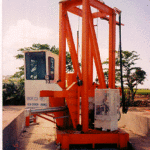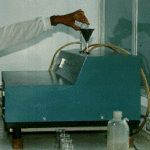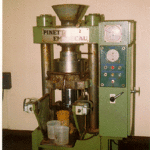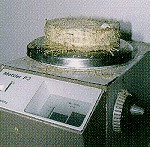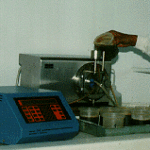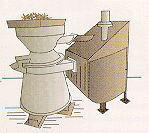1. Registration of Cane Contracts
Section 28 of the MCIA Act (Provision relating to Cane Contracts) provides that cane contracts between planters and millers shall be entered into for any crop year on or before 31 May and forwarded to the Committee for registration not later than 15 June of that crop year.
Prior to the harvest season, the CAD, the SIFB and the millers provide a one-stop-shop service in the various factory areas for the registration of sugarcane plantations, signing of cane contracts and registration of the cane contracts. This one-stop-shop service enables planters to complete all formalities under one roof and obtain their registered cane contracts on the spot.
Documents needed for registration of cane are as follows:
- ID Card of the planter
- Utility Bill (CWA, CEB, CWA etc.)
- Previous SIFB
2. Final Road Rate
Pursuant to section 40 of the MCIA Act, “where the distance over which a planter’s canes are transported to a factory is greater than 6.4 kilometres, the miller shall” –
- Where the transport is undertaken by the planter, reimburse to the planter the amount by which the cost of transport over that distance exceeds the cost of transport over 4 kilometres;
- where the transport is undertaken by the miller, be refunded the cost of the cost the transport over the first 6.4 kilometres
The rate of refund (Final Assessment of Road Rate) is determined by the Control and Arbitration Committee.
3. Final Assessment of Scum
The Final assessment of Scum is based on the average quantity of scums produced by each factory per tonne of canes milled during the preceding crop year.
4. Sucrose Content Tests
The Control and Arbitration Department carries out sucrose content tests on the canes of planters at the CAD Laboratories. Cane consignments are sampled at the different cane transit sites and the samples collected are transported to the centralized laboratories for analysis.
Every year, any planter or group of planters having an amount of canes as specified by the Committee may apply for a separate sucrose content test in case, he wants his canes to be assessed separately. The last date for the submission of an application for a separate test is 15 March in any crop year. Application forms are available at the Head Office and may also be downloaded. Other documents required are:
- SIFB card for the coming crop year (Original and photocopy)
- Identity card (Original and photocopy)
The First, Second and Third Provisional Assessments enable planters to obtain financial advances from the Mauritius Sugar Syndicate for canes already delivered.
5. Price of Molasses
Since Crop 2014, no molasses is being exported by the Mauritius Molasses Company Limited. The determination of the average price of molasses paid to planters which was previously being done by the Mauritius Molasses Company Limited is now performed by the CAD.
With the amendments made to the Sugar Industry Efficiency Act in December 2016, the price of molasses payable to planters include the distiller/bottlers contribution of Rs. 40 levied per litre of absolute alcohol.
6. Weighbridge Calibrations and Checks
Section 32 of the MCIA Act stipulates that the Control and Arbitration Committee may require an employee to verify the accuracy of cane or sugar weighing machines wherever situated and the records kept by any person relating to the weighing of canes or sugar.
The CAD possesses two lorries equipped with crane and forty-five 1-tonne cubic metallic standard weights to carry out the accuracy verification of the weighbridges of the different sugar factories, Cane Transit Sites, the Bulk Sugar Terminal, the Bagged Sugar Storage and Distribution Co. Ltd. and the Refineries.
7. Complaints and Disputes
During any crop year, several complaints are officially received from sugarcane planters and lorry drivers. All complaints are usually attended to. Sometimes, Senior Technical Officers also resolve verbal complaints made by planters and lorry drivers at the various factory and cane transit sites. All complaints are registered by an officer of the CAD on a dedicated Complaints and Suggestion Book. Decision taken is communicated to the complainant and matter is closed when both parties are satisfied.
8. Value Added Products
The CAD also delivers the following permits to individual:
- Authorisation to deliver canes to a person engaged in the production of “co-products”, including cane juice for direct consumption
- Authorisation to use canes grown by planter to manufacture the types of sugars known as Khandasary and Jaggery
The rate applicable in both cases is as per the table below:
| Weight of Sugarcane (Tons) | Price Applicable (Rs) |
| <= 10 | 2,000 |
| >10 | 10,000 |
These applications are recommended to the Minister for his approval in conformity with Section 24 (3) of the MCIA Act 2011.
Documents needed:
- Letter of application from operator
- Letter of application from planter
- ID card of operator
- ID card of planter
- Utility bill of operator
- Site plan of sugar cane field of the planter
- SIFB card of planter

